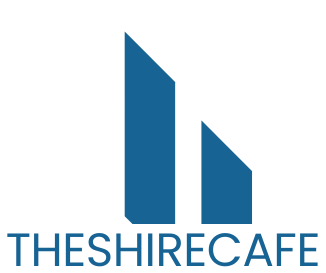House hacking can be a game-changer for anyone looking to ease their mortgage burden while enjoying a side of extra income. But before diving headfirst into this real estate adventure, it’s crucial to consider the not-so-glamorous side of the equation: maintenance costs. After all, nothing says “surprise!” quite like a leaky roof or a rebellious furnace that decides to take a vacation in the dead of winter.
Table of Contents
ToggleUnderstanding House Hacking
House hacking provides a strategic approach to managing living expenses while gaining financial benefits. It involves renting out a portion of one’s primary residence to offset mortgage payments and create additional income streams. This method appeals to many homeowners and investors seeking to maximize their property’s value.
In this arrangement, individuals may rent out a room, basement, or an accessory dwelling unit. Renting these spaces contributes to covering monthly mortgage costs, yet it’s essential to account for maintenance expenses associated with the property. Unforeseen repair issues, such as a leaky roof or malfunctioning HVAC system, can arise and impact the overall experience.
Calculating potential maintenance costs becomes crucial. Homeowners should set aside at least 1% of the property value annually for maintenance. For instance, a $300,000 property may necessitate around $3,000 for upkeep each year. This figure helps in budgeting for repairs and preventive maintenance.
Staying proactive about property condition also plays an essential role in house hacking. Routine inspections could prevent minor issues from escalating into costly repairs. Regular maintenance includes checking for leaks, servicing appliances, and maintaining the yard.
Focusing on these elements ensures a smoother house hacking experience. Understanding the balance between rental income and maintenance expenses keeps finances stable. Additionally, recognizing that some maintenance costs arise unexpectedly enhances preparedness and financial resilience.
The Basics of Maintenance Costs
Understanding maintenance costs is vital for anyone considering house hacking. This knowledge helps prepare homeowners for the various expenses they may encounter.
Regular Maintenance Expenses
Regular maintenance expenses often include tasks like lawn care, gutter cleaning, and routine HVAC servicing. Homeowners should expect to allocate funds for landscaping, plumbing, and electrical inspections. Setting aside funds for these activities ensures that minor issues are fixed before they escalate. An annual budget of about 1% of the property value covers these essential services. For example, a property valued at $300,000 could benefit from a $3,000 annual maintenance budget. These proactive measures keep properties in optimal condition and enhance tenant satisfaction.
Unexpected Repairs and Upkeep
Unexpected repairs can significantly impact a homeowner’s financial stability. Issues such as a leaking roof or a broken furnace may arise without warning, leading to hefty bills. Homeowners should account for these occurrences by setting aside a contingency fund, typically 1% to 3% of the property’s value for emergencies. For a $300,000 home, this could amount to $3,000 to $9,000 yearly. Staying prepared for these unforeseen costs enables homeowners to handle repairs promptly, ensuring property value remains intact and tenant trust is upheld. Regular inspections minimize the risk of such surprises, allowing for a more manageable maintenance experience.
Factors Influencing Maintenance Costs
Maintenance costs for house hacking vary based on several key factors. Understanding these elements helps homeowners budget effectively.
Property Type and Age
Property type significantly affects maintenance expenses. Older homes often require more repairs due to wear and tear. For instance, a historic property might need frequent plumbing updates or roof replacements, leading to higher costs. Conversely, newer constructions may entail fewer repairs but still demand routine maintenance. Single-family homes can incur different expenses compared to multi-family units. Multi-family properties may involve shared systems like HVAC, which can simplify some costs while complicating others. Overall, age and property type dictate both routine upkeep and unexpected repairs.
Location and Environmental Factors
Location plays a crucial role in determining maintenance costs. Regions with harsh weather conditions, like heavy snowfall or extreme heat, often pose greater challenges. Homeowners might face increased demands for roof repairs in snowy climates or air conditioning service in hotter areas. Additionally, properties in flood-prone zones require enhanced drainage systems, adding to overall costs. Code regulations can vary by area, impacting repair types and costs. Landscapes also influence maintenance; coastal properties may need more frequent paint jobs due to salt exposure. Overall, understanding local environmental factors helps in preparing adequate budgets for maintenance.
Budgeting for Maintenance Costs in House Hacking
Budgeting for maintenance costs is crucial in house hacking. Homeowners must anticipate various expenses to ensure financial stability.
Creating a Maintenance Reserve Fund
A maintenance reserve fund provides a safety net for unexpected repairs. Allocating 1% to 3% of the property’s value annually is advisable, establishing a cushion for emergencies. For example, a $300,000 property might require a fund between $3,000 and $9,000. Prioritizing this reserve allows homeowners to address issues swiftly without derailing their budget. Setting up a separate savings account can simplify the process, making it easy to access when needed. This fund lays the groundwork for a more manageable property management experience.
Estimating Annual Maintenance Costs
Estimating annual maintenance costs involves considering multiple factors. Homeowners benefit from allocating about 1% of the property’s value for routine upkeep. For a $300,000 home, that amounts to roughly $3,000 each year for tasks like HVAC servicing and lawn care. Regular inspections can help identify potential issues before they escalate, enabling better financial planning. Age and type of property also influence these estimates. Older homes may require more frequent repairs compared to newer builds. By understanding these dynamics, homeowners can create a more accurate and realistic budget for maintenance costs.
Conclusion
House hacking can be a rewarding venture when approached with a clear understanding of maintenance costs. By proactively budgeting for routine upkeep and unexpected repairs, homeowners can safeguard their investment and ensure a positive rental experience. Setting aside a maintenance reserve fund is crucial for addressing issues without financial strain.
Awareness of property age and location will further aid in anticipating expenses. With careful planning and regular inspections, homeowners can navigate the challenges of house hacking effectively. This strategic approach not only enhances property value but also contributes to tenant satisfaction, making house hacking a viable path to financial freedom.



